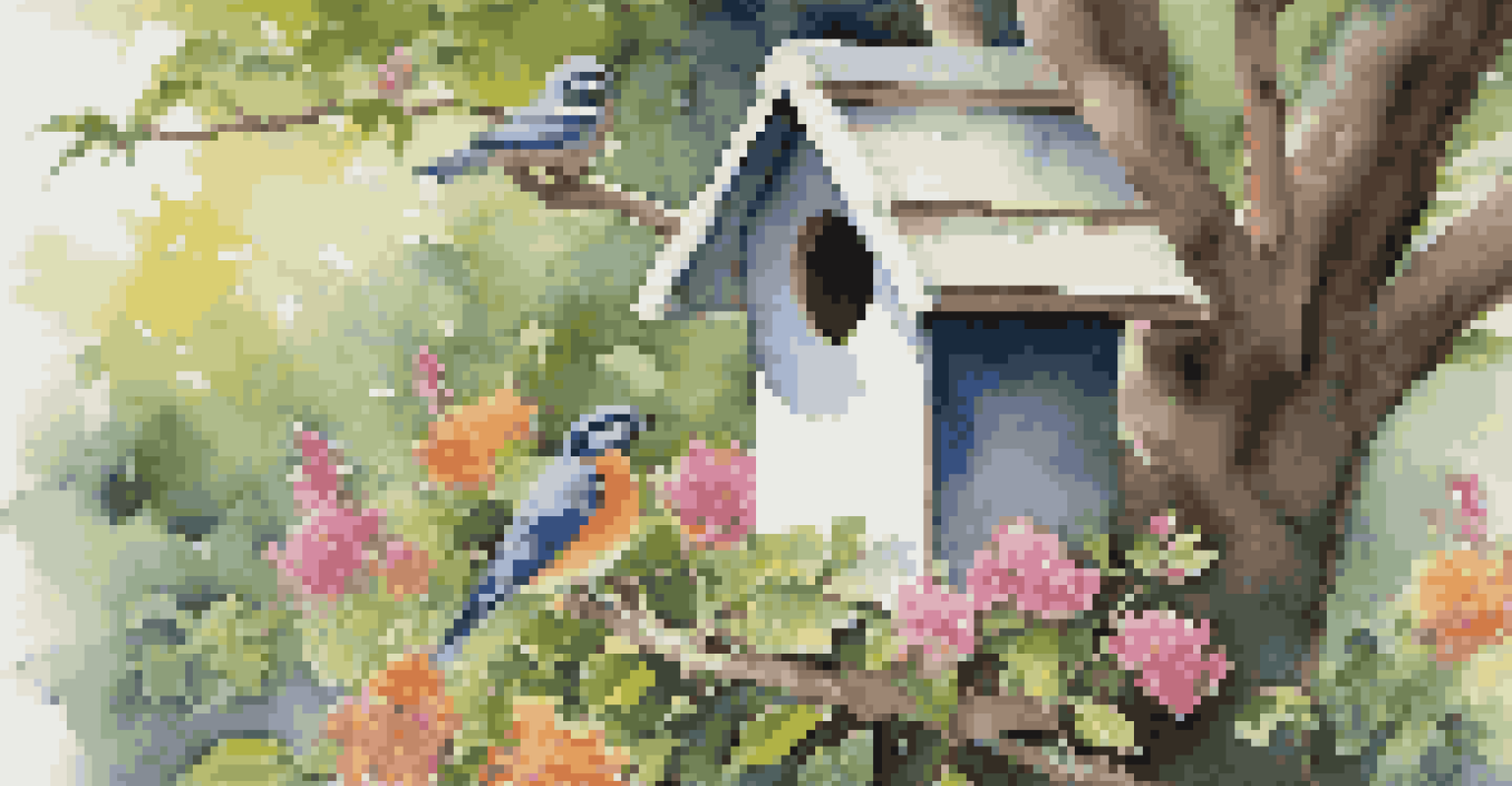Building Birdhouses Without Power Tools: A Manual Approach

Why Build Birdhouses Without Power Tools?
Building birdhouses without power tools connects you with nature and fosters creativity. It’s a chance to slow down and appreciate the craftsmanship involved. Plus, using hand tools can be safer and more approachable for beginners.
The best part of building something is that it is a reflection of who you are.
This manual approach not only encourages mindfulness but also allows you to engage more deeply with the materials. Imagine the satisfaction of shaping wood by hand, knowing that your effort directly contributes to a cozy home for feathered friends.
Additionally, hand-built birdhouses can be more personalized. You’re not just constructing a box; you’re creating a unique habitat that reflects your style and care for wildlife.
Essential Tools for Hand-Building Birdhouses
When tackling a birdhouse project without power tools, the right hand tools become your best friends. Basic tools like a hand saw, chisels, a hammer, and a tape measure are essential. These tools may seem simple, but they enable you to achieve precise cuts and finishes.

Don't forget to include safety gear like gloves and goggles. Even when using hand tools, it’s important to protect yourself from splinters and debris. Remember, safety first ensures a smooth crafting experience.
Hand-Built Birdhouses Foster Creativity
Building birdhouses without power tools encourages mindfulness and a deeper connection with nature.
Lastly, consider the materials you'll need, such as untreated wood, nails, and wood glue. Choosing natural materials not only benefits the birds but also enhances the aesthetic appeal of your birdhouse.
Choosing the Right Wood for Your Birdhouse
Selecting the right type of wood is crucial for building a durable birdhouse. Cedar and pine are popular choices due to their natural resistance to rot and pests. These woods are also lightweight, making them easier to work with by hand.
The greatest gift you can give to others is your time and attention.
Avoid treated wood, as it can contain harmful chemicals that may affect the birds. Instead, opt for untreated lumber, which is safer for wildlife and environmentally friendly. Think of it as creating a safe haven for your avian guests.
Additionally, consider the thickness of the wood. Thicker boards provide better insulation, helping to keep the birds warm during chilly nights. A well-made birdhouse can be a sanctuary for years to come.
Simple Designs for Beginners: Step-by-Step
Starting with a simple birdhouse design is the best way to ease into the process. A basic rectangular box with a slanted roof is perfect for beginners. This straightforward shape allows you to focus on mastering your hand tool skills without feeling overwhelmed.
To create your birdhouse, measure and cut the wood pieces carefully. Ensure all sides fit snugly together, using your hammer and nails to assemble. Don’t hesitate to take your time; there’s beauty in the journey of crafting.
Choose Safe, Natural Materials
Selecting untreated wood like cedar or pine ensures the safety of birds while enhancing the birdhouse's durability.
Consider adding ventilation holes and drainage holes to your design. These features ensure a comfortable and safe environment for the birds, showing that even small details can significantly enhance the overall project.
Finishing Touches: Painting and Decorating
Once your birdhouse is assembled, it’s time to think about finishing touches. Painting or staining can add a personal flair while also protecting the wood. Opt for non-toxic paints or natural stains to ensure the safety of your feathered visitors.
You might also consider decorating your birdhouse with fun designs or patterns. Get creative! Maybe your birdhouse can reflect a theme from your garden or your favorite colors. This customization makes your project feel uniquely yours.
Remember, though, that aesthetics should not compromise functionality. Ensure any decorations do not obstruct entrances or ventilation holes, keeping the birds' comfort in mind.
Choosing the Perfect Location for Your Birdhouse
Placement is key when it comes to birdhouses. Look for a spot that is sheltered from harsh weather and direct sunlight. Ideally, situate your birdhouse in a location that’s visible from your window, so you can enjoy watching the birds as they come and go.
Height is another important factor. Most birds prefer their homes elevated, so consider mounting your birdhouse at least five to ten feet off the ground. This height protects them from predators while providing a sense of security.
Regular Maintenance Keeps Birds Safe
Ongoing maintenance, including seasonal cleaning and repairs, is essential for creating a welcoming environment for birds.
Lastly, consider nearby vegetation. Birds love homes that offer natural cover and nearby perches. A well-placed birdhouse can transform your yard into a lively sanctuary, attracting various species and enhancing your outdoor space.
Maintaining Your Birdhouse Year-Round
Building the birdhouse is just the beginning; ongoing maintenance is essential for keeping it functional and inviting. Regularly check for signs of wear and tear, such as cracks or loose nails. Addressing these issues promptly ensures the safety of the birds that visit.
Seasonal cleaning is also vital. After the nesting season, clean out old nesting materials to prepare for new occupants. A simple scrubbing with soapy water will do the trick—just be sure to rinse and dry it thoroughly.

Lastly, consider adding new features over time, such as perches or decorative elements. This not only keeps your birdhouse appealing but also encourages more birds to visit, turning your backyard into a bustling avian community.